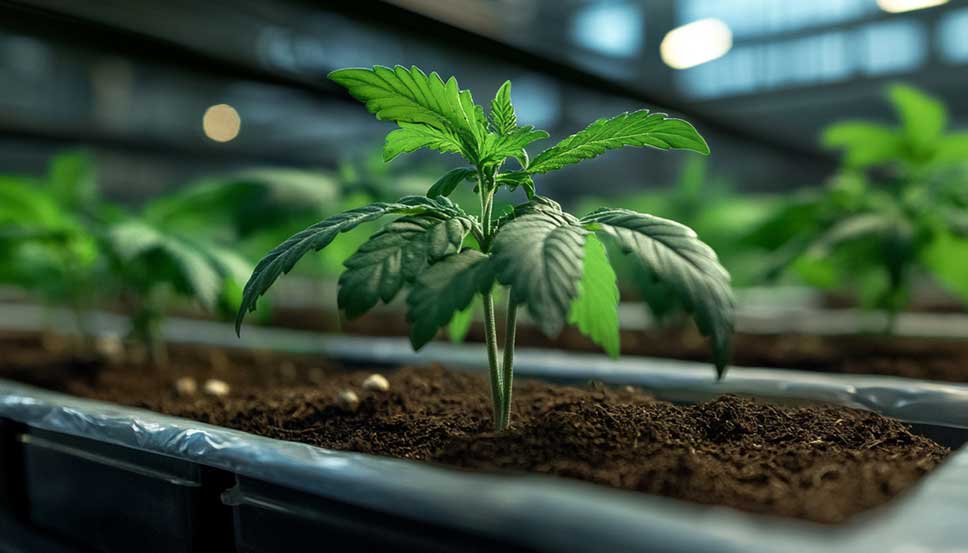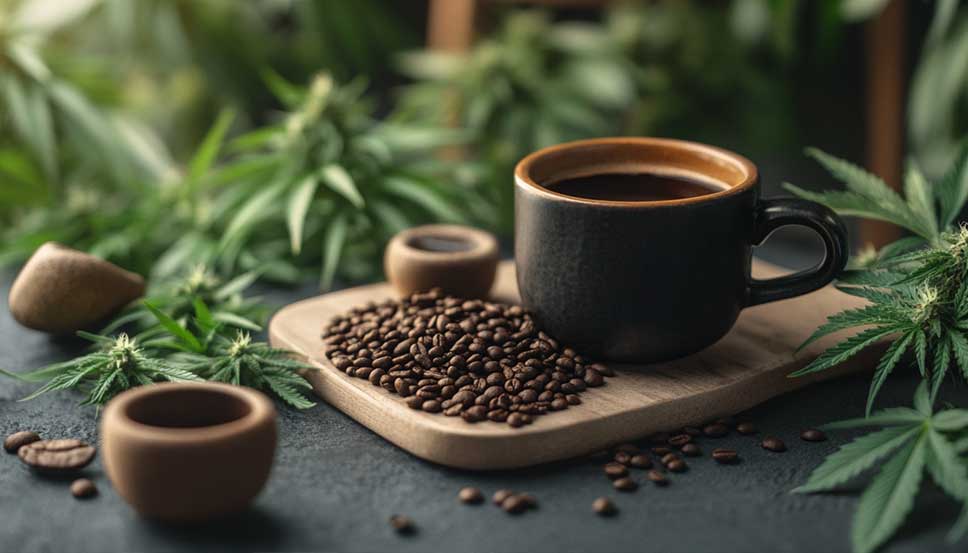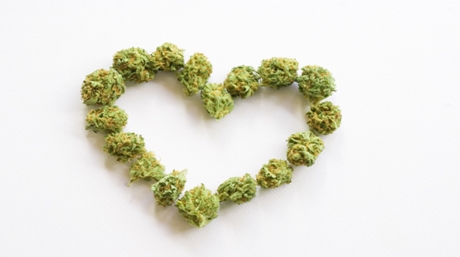Welcome to the world of cannabis cultivation, where every leaf holds the promise of a thriving harvest. In this guide, we unveil a little-known secret that can revolutionize your approach to nurturing plants: baking soda on weeds. Prepare to embark on a journey where science meets horticulture, as we explore how this common kitchen ingredient can transform your marijuana garden. Discover the extraordinary benefits of using baking soda as a natural alternative to leaf fertilizers, unlocking the potential for deep, dark green leaves that thrive under the sun. Get ready to witness the magic of enhanced photosynthesis and enjoy a bountiful crop like never before.
Understanding the Power of Baking Soda
Baking soda, also known as sodium bicarbonate, has remarkable properties that can positively impact the health of cannabis plants. Applying baking soda on weeds not only helps regulate pH levels but also supports nutrient absorption and promotes deep green foliage.
pH balance is essential for healthy marijuana growth. When the pH of the soil or water is too acidic or alkaline, plants struggle to take in nutrients. That’s where baking soda as a pH regulator comes in—it stabilizes the environment and allows cannabis roots to access what they need for proper development.
Using baking soda for weed plants can also encourage chlorophyll production, enhancing photosynthesis—the process by which plants convert light into energy. This means stronger growth, more vibrant leaves, and an overall healthier plant.
Additionally, baking soda’s alkaline nature helps foster beneficial microbial activity in the soil, improving overall soil health and nutrient availability. In short, strategically applying baking soda on weeds can lead to more vigorous cannabis growth and higher yields.
Baking Soda: A Sustainable Leaf Fertilizer Alternative
Step away from synthetic fertilizers and embrace a more eco-conscious option with baking soda on weeds. This common household compound provides a natural way to reduce chemical dependency in your cannabis garden while promoting healthier plant growth.
Baking soda is derived from natural minerals, making it a non-toxic and environmentally friendly choice compared to synthetic leaf fertilizers loaded with chemicals. Its use supports a more sustainable cannabis cultivation approach, benefiting both your plants and the surrounding ecosystem.
Incorporating baking soda into your growing routine is easy and affordable. Whether you’re using foliar sprays for fast nutrient delivery or adding it as a soil amendment for long-term benefits, baking soda on weeds can improve pH balance and plant vitality with minimal effort.
Foliar sprays allow quick absorption through the leaves, ideal for correcting nutrient deficiencies. On the other hand, adding baking soda to the soil supports consistent pH regulation and enhances nutrient availability at the root zone, contributing to stronger, more resilient weed plants.
By choosing baking soda as a sustainable leaf fertilizer, you’re making an intentional move toward cleaner cultivation. It’s a simple, effective way to grow cannabis with fewer synthetic inputs and a reduced environmental footprint.

The Benefits of Deep, Dark Green Weed Leaves
The deep, dark green color of cannabis leaves is more than just a sign of visual beauty—it reflects the health, strength, and vitality of your marijuana plants. By applying baking soda on weeds, growers can achieve this rich coloration and unlock a range of cultivation benefits.
One of the most powerful advantages of using baking soda is its role in boosting photosynthesis. Baking soda enhances chlorophyll production, the pigment responsible for capturing light energy. With increased chlorophyll levels, marijuana plants can convert more light into usable energy, resulting in stronger, more productive growth.
Dark green leaves are also a clear indicator of healthy nutrient uptake. When pH levels are balanced—something baking soda on weeds helps regulate—your plants absorb nutrients more efficiently. This leads to vigorous development, better flower formation, and overall improved crop quality.
Additionally, the use of baking soda contributes to stronger stress resistance. Healthy foliage can better endure temperature fluctuations, pest pressures, and environmental stressors. In fact, baking soda has mild antifungal properties that can help prevent common problems like powdery mildew. As Healthline explains, baking soda is often used as a safe, natural solution for controlling mildew and mold in both home and garden settings.
By incorporating baking soda on weeds into your cultivation routine, you support lush, vibrant growth and prepare your plants for a more abundant harvest. These vibrant leaves not only reflect the success of your garden—they are the foundation for it.
Cultivation Tips and Best Practices
If you’re planning to try baking soda on weeds, there are a few helpful tips to make sure you use it safely and effectively. Here’s a straightforward guide based on real growing experience—not just textbook advice.
- Choose the right product: Not all baking soda is created equal. Look for food-grade baking soda with no additives or fragrances. It’s cleaner, safer, and better for your plants and soil health.
- Don’t overdo it: When using baking soda on weeds as a foliar spray, less is more. Try spraying once every two to three weeks during the vegetative stage. Always keep an eye on how your plants respond—yellowing or burnt tips may mean it’s time to ease up.
- Stick with organic methods: If you’re going for a more natural grow, baking soda fits right in. Pair it with compost, natural teas, and gentle amendments to reduce reliance on synthetic fertilizers. It’s good for your plants—and for the planet.
- Try companion planting: Growing herbs like basil or mint alongside your cannabis can help repel pests and boost overall plant health. These companions work well with a baking soda on weeds approach, adding another layer of natural support.
- Use integrated pest management: Pests happen. But combining baking soda with a good IPM strategy—like monitoring, keeping your grow area clean, and bringing in beneficial insects—can help protect your crop without reaching for harsh chemicals.
- Watch your pH: One of the main benefits of baking soda on weeds is its role in pH regulation. Cannabis plants do best in a pH range of 6 to 7. Use a reliable pH meter and make small adjustments as needed. Drastic changes can stress your plants, so go slow and steady.
By following these simple best practices, you can make the most of baking soda on weeds and support a healthier, more sustainable cannabis grow. It’s all about balance, observation, and working with nature instead of against it.
Showcasing Success Stories:
Discover the experiences of passionate cultivators who have embraced baking soda on weeds as a natural leaf fertilizer. Hear firsthand accounts of their journeys, from initial skepticism to the awe-inspiring results they achieved. These tales of robust plants, dense flowers, and exceptional harvests highlight how baking soda on weeds can transform your marijuana cultivation routine.
The Blossoming Enthusiast:
Meet Sarah, an enthusiastic cultivator who decided to explore the benefits of baking soda on weeds. Although hesitant at first to move away from traditional synthetic fertilizers, she incorporated baking soda into her routine with curiosity. Over time, she noticed a remarkable shift—her cannabis plants began to display lush, deep-green leaves, improved vigor, and healthier growth overall.
By harvest time, her plants produced dense, resin-rich buds with an intense aroma and high potency. Sarah was thrilled. Her success demonstrated how baking soda on weeds not only encouraged better photosynthesis but also led to more bountiful yields without depending on harsh chemicals.
The Sustainable Innovator:
James was on a mission to reduce his garden’s environmental impact. Intrigued by natural solutions, he gave baking soda on weeds a try. Not only did his plants thrive, but they also became more resistant to pests and fungal issues. With greener leaves and fewer interventions, James felt more connected to his plants and their environment.
He expanded his eco-friendly practices by adding companion plants and avoiding synthetic products. The success of baking soda on weeds in his garden encouraged him to share his knowledge with other growers looking to adopt a more sustainable cultivation approach.
The Resilient Grower:
Mark, a veteran cannabis grower, faced a crisis when a sudden drop in pH levels began to affect his crop. After researching solutions, he applied a carefully measured dose of baking soda on weeds to stabilize his soil. The results were quick and impressive—his plants bounced back, with stronger stems, deeper color, and visible vitality.
Encouraged, Mark continued to use baking soda on weeds throughout the growing season. The final harvest exceeded his expectations: large, sticky buds and plants that showed remarkable resilience despite temperature swings and humidity shifts. For Mark, this simple kitchen ingredient became a powerful tool in his cultivation toolkit.
These compelling success stories showcase how using baking soda on weeds can lead to healthier plants, greater yields, and a more sustainable approach to growing cannabis. Let these growers inspire your next cultivation experiment, and see for yourself how a small change can make a big difference.
Conclusion: The Natural Power of Baking Soda on Weeds
As we conclude this glossy, we invite you to embrace the transformative power of baking soda on weeds in your cannabis garden. From its pH-balancing properties to its capacity to promote lush, deep green leaves, this simple household ingredient provides a natural and sustainable solution to elevate your cultivation practices.
By using baking soda on weeds, you support healthy photosynthesis, improve nutrient uptake, and foster greater plant resilience—without relying on synthetic chemicals. Explore the boundless possibilities it offers, enjoy the rewards of vibrant foliage, and savor the satisfaction of a bountiful harvest.
Let baking soda on weeds become your trusted ally in nurturing thriving marijuana plants, and witness your garden flourish like never before.
Frequently Asked Questions
What are the benefits of using baking soda on weeds in cannabis cultivation?
Using baking soda on weeds can significantly enhance the health of your cannabis plants. It improves photosynthesis, supports the development of deep, dark green leaves, and optimizes nutrient absorption by balancing the soil’s pH. These effects lead to more vigorous growth, better stress resistance, and ultimately, larger and healthier harvests. It’s a simple yet powerful way to boost your plants’ vitality naturally.
How does baking soda on weeds support sustainable marijuana cultivation?
Baking soda on weeds offers a natural, eco-conscious alternative to synthetic fertilizers. It helps reduce chemical use in your garden, lowering environmental impact while maintaining plant health. Its affordability, ease of use, and compatibility with organic growing techniques—like companion planting and integrated pest management—make it an ideal choice for cultivators seeking sustainable and effective solutions.
Are there success stories about using baking soda on weeds as a leaf fertilizer?
Yes, many growers have experienced exceptional results using baking soda on weeds as a leaf fertilizer. Reports include visibly greener foliage, stronger plant growth, fewer pest issues, and better flower production. Whether it’s recovering from a pH imbalance or shifting toward a chemical-free routine, cultivators consistently highlight baking soda as a key element in their successful marijuana gardens.














